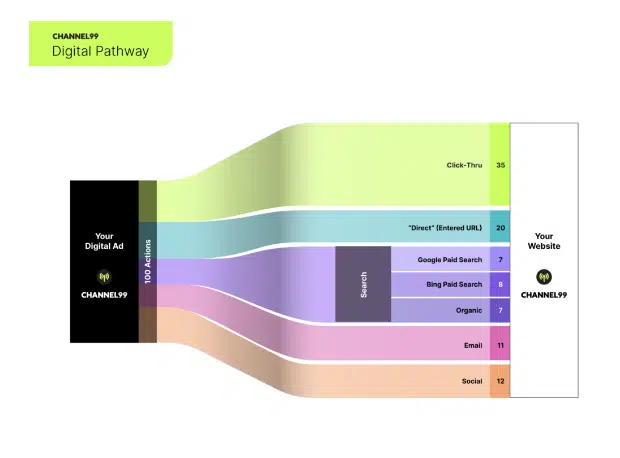Channel99 announces verification pixel technology for B2B
The new platform will give B2B marketers visibility into performance across advertising, web, webinar, email, social and other channels.
Channel99, the B2B performance and marketing attribution service launched by Chris Golec, founder and former CEO of Demandbase, has announced a pixel-technology driven platform to give visibility into the B2B customer journey.
In November 2022, Channel99 debuted with a free mobile app and the promise of a full platform to follow. Today’s announcement fulfils the promise. “The platform is really a much more robust solution,” Golec told us. “It connects with your CRM. We’ve built it in a way that people can get live in a couple of hours; it’s not like a big deployment.”
Verification pixel technology. In what Channel99 says is a first for B2B marketing, performance and marketing attribution will be tracked across a wide range of channels using pixels. The aim is to provide visibility into reach, engagement and conversion, thus uncovering efficiencies and inefficiencies in marketing investments. The solution will not track the behavior of individuals but rather accounts, based primarily on IP addresses (cookies are not in play here).
“In B2B, 65% of your web traffic is generated by advertising and other means — it all gets thrown into this bucket called ‘direct,’ people don’t really know where it comes from,” Golec explained. “What we’ve built is a verification pixel you can place into an ad creative, into an ebook, a video, an email signature, and we can detect every time that ad is seen — the company, industry, all those attributes — and understand if that was the target audience it was intended for.”
It gives Channel99 the ability to track the high volume of anonymous engagement that typically occurs before a buyer completes a form or offers other identifying information.
By seeing if the content leads to a “view-through” to a website or a landing page, Channel99 will be able to attribute the activity back to the ad. This should benefit not only B2B marketers but also the vendors they rely on. “Companies like 6sense, Demandbase and LinkedIn that are built for targeting specific accounts will end up getting more credit,” Golec predicted. “You’ll be able to see the difference in efficiency between Google and Microsoft display ads versus 6sense and Demandbase.”
6sense and Demandbase may be more expensive, but performance might offset those higher costs.
But pixels are nothing new. In a recent blog post, Golec admitted “consumer marketers have been using tracking pixels and cookies for years to monitor publisher brand safety, understand human vs. non-human traffic, and assess ad viewability.” But B2B requirements are different. “In B2B…what really matters to advertisers and marketers is the effectiveness of reaching specific companies in their target audiences to drive increased engagement, and, ultimately, more revenue.”
Dig deeper: The 7 B2B website essentials: What customers want
The importance of being a third party. One advantage Channel99 has in not having its own ABM solution is that it has been able to partner with leading ABM providers to create an account ID network wider than any individual ABM provider can offer. The other advantage is that Channel99 is deploying a universal pixel that anyone can accept and approve — “Demandbase can’t put their pixels into Google Ads.”
The output includes ranking vendors and channels, showing return on marketing spend and cost per pipeline opportunity. “You can select multiple vendors and it show you how well each one reaches and engages the target audience and what the actual cost per visit is for the intended audience.”
The result can also be represented in a Sankey diagram:

After an initial free trial period, the solution will be available on subscription, ultimately determined by volume of usage. The hope is that more efficient marketing investment will be seen to offset the cost of the Channel99 platform.
Why we care. Attribution is one of marketing’s enduring puzzles. Golec confesses that at Demandbase they had to devise various KPIs to show that their offering was returning value. “They worked,” said Golec, “but they were a bit…squishy. This is science.”
It’s also interesting to think about how this platform benefits the entire ecosystem — or at least the parts of it that work efficiently — by highlighting where marketing dollars are well spent.
Related stories